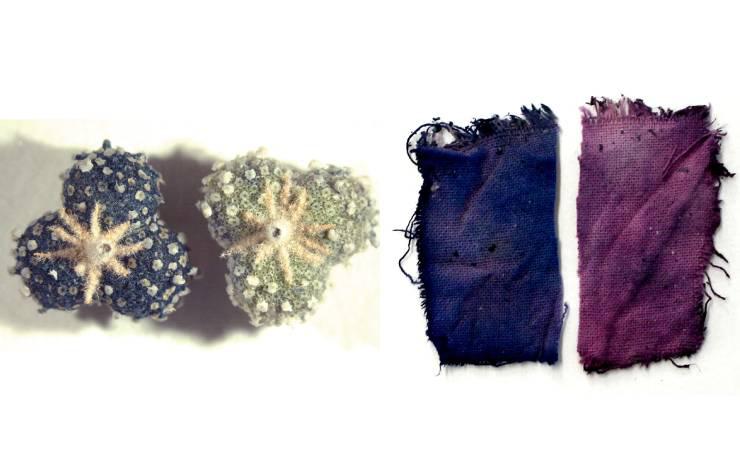20-04-2020

An interdisciplinary team of LAQV researchers from NOVA School of Science and Technology (FCT NOVA), University of Porto and University of Aveiro, unveiled the complex chemical structure of the medieval purple-blue dye used in the illumination of medieval manuscripts. The elucidation of the chemical structure of the medieval folium dye was a mystery until now, despite the efforts of several international research teams since the 20th century. The results obtained in this research work are an important contribution to the preservation of our cultural heritage and are now published in the high-impact journal Science Advances.
The study was developed by LAQV chemists and conservation and restoration researchers, specialists in the identification of natural products and the reproduction of medieval colors, and counted on the collaboration of a biologist from the University of Lisbon with extensive knowledge of Portuguese flora who supervised the collection of fruits and allowed to find and identify the mysterious small plant, Chrozophora tinctoria.
Of all the medieval dyes, folium is the only one whose chemical structure was unknown. Maria João Melo, professor and researcher of LAQV at FCT NOVA, explains that “folium is extracted from the fruits of the Chrozophora tinctoria plant, native in Portugal, and that the blue/purple of folium was used during Antiquity and the Middle Ages, mainly in the illuminations of precious manuscripts. However, the knowledge of its medicinal and dyeing properties was lost in the 19th century”. It is known that the Chrozophora tinctoria plant was used in an industry in Grand-Gallargues, France, where this blue was captured in cloths, with still medieval ways, which were later exported to Holland, where it was used to dye red the crust of Dutch cheese.
The researchers studied several medieval documents and based on the detailed descriptions selected from three medieval treatises describing the uses of this dye, they determined the best time for the collection of the species and the best way to extract the dye. They planned field expeditions as well as sampling methods to collect materials from the Chrozophora tinctoria plant. The plant was found in Southern Portugal (Granja/Mourão) and only the fruits were collected, during the summer months. Paula Nabais, professor and researcher at the Department of Conservation and Restauration at FCT NOVA, the first author of the study, explains that “the extracts obtained showed a blue dye as the main chromophore. The chromophore, the molecule responsible for color, was isolated, purified and characterized through a multi-analytical methodology, at LAQV - University of Porto, under the supervision of Victor de Freitas and Joana Oliveira. The purification and characterization were challenging until we were able to obtain the optimum conditions”. The researchers called chrozophoridine to the isolated chromophore. Chrozophoridine was used in the past to make a beautiful blue dye in medieval illuminations and “now after determining the structure it is concluded that it is neither an anthocyanin, found in many blue flowers and fruits, nor indigo, the most stable natural blue dye, but a class of its own", concludes Maria João Melo, leader of the published study.
In cultural heritage, understanding and preventing degradation mechanisms involves elucidating the dye chemical structure. Only in this way, it will be possible to identify folium in artworks and study its properties, enabling new conservation strategies. The researchers responsible for the study add that “inspired by the use of this dye in the past, it will be interesting to develop new sustainable applications, such as, for example, to inhibit the growth of unwanted bacteria when fermenting lactic acid”.
Video: Story behind the medieval blue from Chrozophora tinctoria
Press
“Investigadores portugueses revelam estrutura da cor azul usada em iluminuras medievais” (RTP)
“Solving the 1000-year-old mystery of rare blue medieval paint” (CNN)
“Cientistas portugueses resolvem o mistério do corante azul medieval” (Público)
"Um mistério de 1.000 anos desvendado" (SIC)
"Investigadores portugueses revelam estrutura da cor azul usada em iluminuras medievais" (Visão)
“Ancient recipes led scientists to a long-lost natural blue “ ScienceNews
“Solving the mystery of a medieval blue hue” (c&en)
“Investigadores portugueses revelam estrutura da cor azul usada em iluminuras medievais” (Impala)
“Investigadores portugueses revelam estrutura da cor azul usada em iluminuras medievais” (Informa+)
“Investigadores revelam estrutura da cor azul usada em iluminuras medievais” (Notícias ao Minuto)